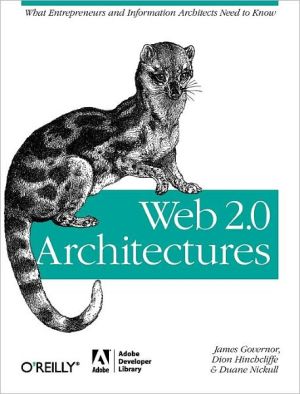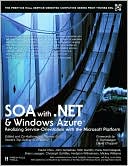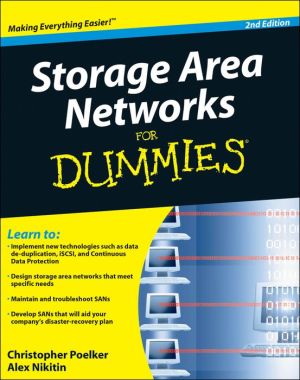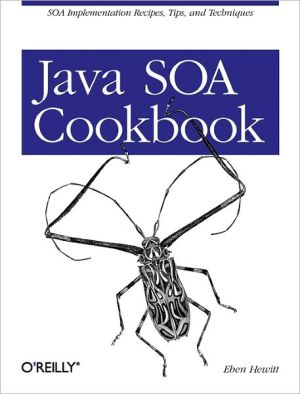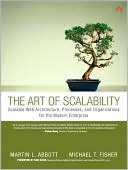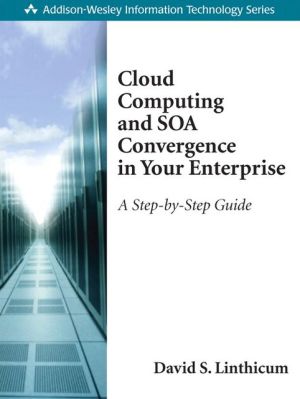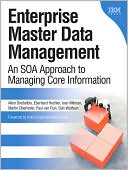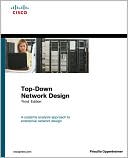Web 2.0 Architectures
Web 2.0 is more pervasive than ever, with business analysts and technologists struggling to comprehend the opportunity it represents. So what exactly is Web 2.0 — a marketing term or technical reality? This fascinating book finally puts substance behind the phenomenon by identifying the core patterns of Web 2.0, and by introducing an abstract model and reference architecture to help you take advantage of them.\ In Web 2.0 Architectures, authors Duane Nickull, Dion Hinchcliffe, and James...
Search in google:
Web 2.0 is more pervasive than ever, with business analysts and technologists struggling to comprehend the opportunity it represents. But what exactly is Web 2.0 -- a marketing term or technical reality? This fascinating book finally puts substance behind the phenomenon by identifying the core patterns of Web 2.0, and by introducing an abstract model and reference architecture to help you take advantage of them. In Web 2.0 Architectures, authors Duane Nickull, Dion Hinchcliffe, and James Governor -- who have 40 years of combined experience with technical specifications and industry trends -- examine what makes successful Web 2.0 services such as Google AdSense, Flickr, BitTorrent, MySpace, Facebook, and Wikipedia tick. The result is a base of knowledge that developers, business people, futurists, and entrepreneurs can understand and use as a source of ideas and inspiration. This book reveals: A Model for Web 2.0 -- An in-depth look at how the classic Client-Server model has evolved into a more detailed Web 2.0 model. Web 2.0 Reference Architecture -- A generic component view that helps decision-makers recognize basic patterns in existing Web 2.0 applications-patterns that can be repurposed for other commercial ventures. Specific Patterns of Web 2.0 -- How Service Oriented Architecture (SOA), Software as a Service pattern (SaaS), Participation-Collaboration Pattern, AJAX, Mashups, Rich User Experience (a.k.a. RIA), Collaborative Tagging Systems (Folksonomy), and more can be used in your technology business. In true Web 2.0 fashion, Nickull, Hinchcliffe, and Governor will present the reference architecture and patterns on their companion website so that people in the industrycan augment it and continue the discussion.
Preface; Why Web 2.0 Matters; The Post That Led to This Book; Developing Web 2.0 Patterns; How to Use This Book; Conventions Used in This Book; Using Code Examples; Safari® Books Online; How to Contact Us; Acknowledgments; Chapter 1: An Architect’s View of the Web; 1.1 Looking for Web 2.0; 1.2 Capturing Web 2.0 Knowledge with Patterns and Architecture; Chapter 2: A Different View of the Internet; 2.1 Best Practices for Forensic Architecture; 2.2 Internet Aspects; Chapter 3: Dissecting Web 2.0 Examples; 3.1 DoubleClick and Google AdSense; 3.2 Ofoto and Flickr; 3.3 Akamai and BitTorrent; 3.4 MP3.com and Napster; 3.5 Britannica Online and Wikipedia; 3.6 Personal Websites and Blogs; 3.7 Screen Scraping and Web Services; 3.8 Content Management Systems and Wikis; 3.9 Directories (Taxonomy) and Tagging (Folksonomy); 3.10 More Hints for Defining Web 2.0; Chapter 4: Modeling Web 2.0; 4.1 A New Client/Server Model for Web 2.0; 4.2 Time Magazine’s Person of the Year: You (and Web 2.0); Chapter 5: A Reference Architecture for Developers; 5.1 About Reference Architectures; 5.2 The Web 2.0 Reference Architecture; 5.3 Architectural Models That Span Tiers; 5.4 Consistent Object and Event Models; Chapter 6: From Models to Patterns; 6.1 A Metamodel for Architectural Patterns; 6.2 The Pattern Presentation Template; Chapter 7: Specific Patterns of Web 2.0; 7.1 The Service-Oriented Architecture Pattern; 7.2 The Software as a Service (SaaS) Pattern; 7.3 The Participation-Collaboration Pattern; 7.4 The Asynchronous Particle Update Pattern; 7.5 The Mashup Pattern; 7.6 The Rich User Experience Pattern; 7.7 The Synchronized Web Pattern; 7.8 The Collaborative Tagging Pattern; 7.9 The Declarative Living and Tag Gardening Pattern; 7.10 The Semantic Web Grounding Pattern; 7.11 The Persistent Rights Management (PRM) Pattern; 7.12 The Structured Information Pattern; 7.13 Summary; Chapter 8: Where Are We Going from Here?; 8.1 Web 2.0 Offshoots; 8.2 A Timeless Way to Build Software 2.0; 8.3 The Timeless Way of Building Software: Inspiration for the Next Generation of Web Software; 8.4 Creating Open Services That Last (and That Anyone Can Use); 8.5 Web 2.0 into the Uncertain Future; Colophon;James Governor is Principal Analyst and founder of RedMonk (http://www.redmonk.com/jgovernor/). He leads coverage in the enterprise applications space, assisting clients with application development, integration middleware and systems management issues, as they relate to operational and business process optimization.Before RedMonk he spent three years at Illuminata, Inc., where he led both the Application Strategies and Enterprise Management practices at the firm. He worked with both vendor clients, to establish product development and marketing strategies, and as an advisor on IT strategy to user organizations and service providers. James managed other analysts at the firm to ensure timely delivery of reports and custom research projects.He joined Illuminata from InformationWeek UK, where he was deputy managing editor.Before InformationWeek he worked at Computing, the UK's leading enterprise title. As a reporter he specialized in systems management, application middleware, and legacy operating environments, working closely with IT managers and vendors to identify and break exclusive news stories.James has been an IBM and Microsoft corporate watcher for 8 years. He's regularly quoted in US and European press, and has served as an industry expert for television and radio segments with media outlets like the BBC.Dion Hinchcliffe is founder and chief technology officer for the Enterprise Web 2.0 advisory and consulting firm Hinchcliffe & Company, based in Alexandria, Virginia. A veteran of software development, Dion has been working for two decades with leading-edge methods to accelerate project schedules and raise the bar for software quality. He has extensive practical experience with enterprise technologies and he consults, speaks, and writes prolifically on IT and software architecture. Dion still works in the trenches with enterprise IT clients in the federal government and Fortune 1000. He also speaks and publishes about Web 2.0 and SOA on a regular basis. Dion is working on a book about Web 2.0 for Addison-Wesley and is currently editor-in-chief of the Web 2.0 Journal and AjaxWorld Magazine.Duane Nikull works as a senior technical evangelist for Adobe Systems, Inc. The main focus of his professional career (http://www.nickull.net) has been to work for both the United Nations CEFACT committee and OASIS for the purposes of writing and building new architectures for global integration of multiple systems. Since 1996, he has worked on multiple enterprise architectures including many service oriented architectures (SOA) within various standards bodies including W3C, UN/CEFACT, OASIS and others. He has also contributed to many SOA papers and articles on service oriented architecture. His focus has shifted towards many web service standards in recent years.He has worked on many other interesting technologies including the first contextual XML Search Engine, an Alternative fuel hydrogen project and the new UN/CEFACT eBusiness Architecture and related technologies.
